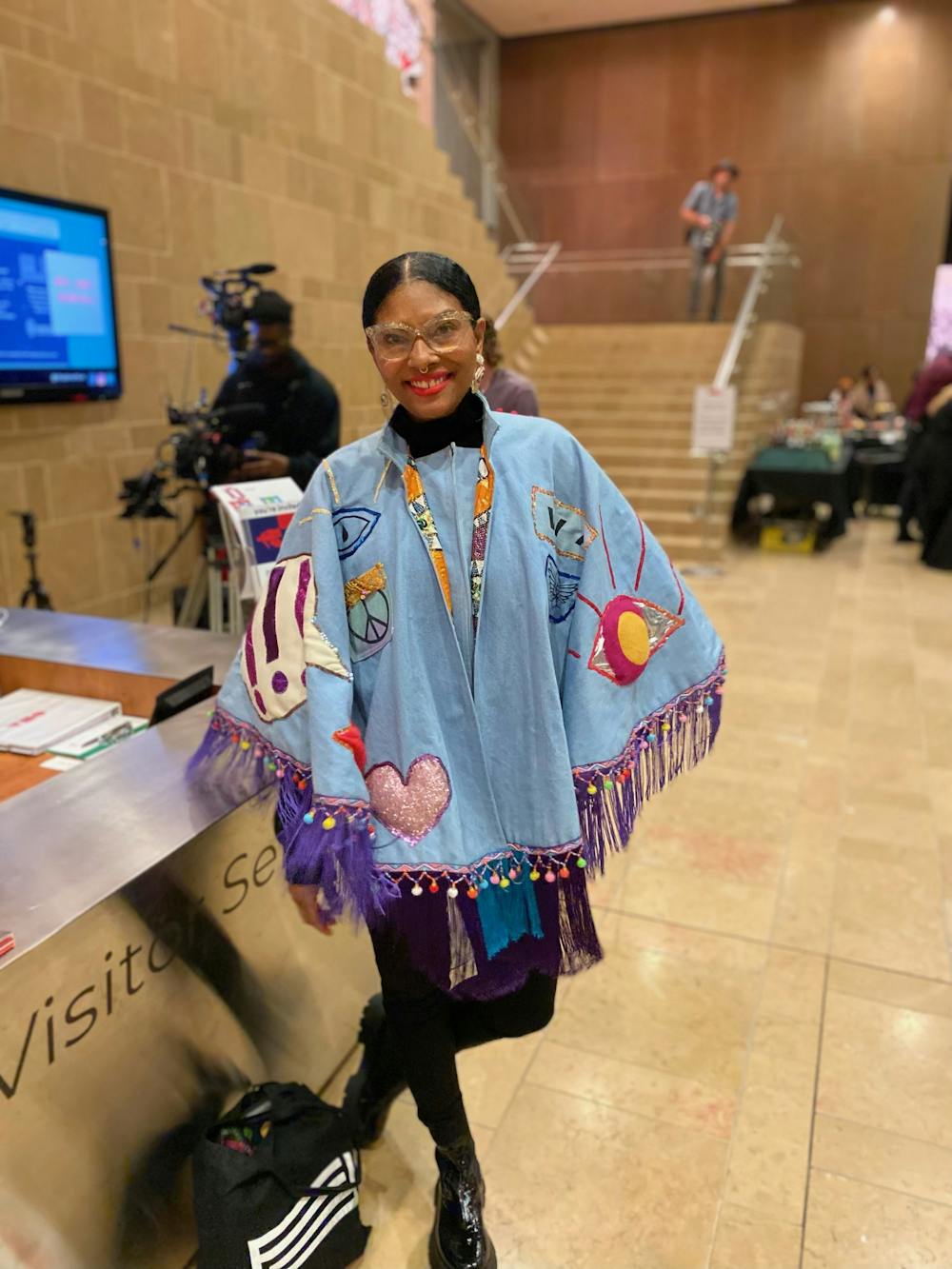Artists Sanford Biggers, MASK Consortium and Wildcat Ebony Brown of the Wide Awakes made their debut at the Chazen Museum of Art on Thursday, introducing the “re:mancipation” project.
The presentation at the Chazen involved a thorough analysis of the sculpture “Emancipation Group,” why it’s problematic and the history of racism in the U.S. The “re:mancipation” project was organically inspired in 2020 during the uproar from Black Lives Matter protests, according to Biggers.
“The shutdown happened, and the subsequent summer and all the protests happened and that’s when, between Amy, Mark and myself, we thought, this is a great opportunity to do a deep dive into this project,” said Biggers. “We wanted to create something that not only investigates it, but also could be a proposal of how to deal with problematic memorials, monuments and sculptures for exhibitions.”
The theory behind the “re:mancipation” project was inspired by Thomas Ball’s sculpture “Emancipation Group,” a problematic piece created in 1873 that poses a controversial understanding of racism in America, along with additional objects in the museum’s collection, new artwork by Biggers and new research, archival and educational material. Ball’s controversial statue commemorates the Emancipation Proclamation and depicts Abraham Lincoln granting freedom to a figure representing enslaved people.
The “Emancipation Group” remains controversial because it shows President Lincoln fully clothed in a heroic stance bestowing freedom upon the kneeling, half-nude Black man shown in an inferior position. The statue characterized Black freedom as an act unachievable by a Black person, thus alluding to white power and the unequal relationship between Black and white Americans.
After already working with the Chazen in 2019, Biggers noticed the “Emancipation Group” piece and was fascinated by what it stood for. Ball’s piece is disruptive and offensive as it establishes an idealized version of President Lincoln and ignores the imperfections, according to Frederick Douglass who gave a speech at the inaugural ceremonies of the monument in 1876. Biggers wanted to respond in a proper manner to the misleading nature of the statue.
Biggers found the Chazen Museum to be the perfect location because not only is it a historical museum containing numerous monumental pieces, but it is a place of research that welcomes creativity and innovation.
“This particular project has allowed us to do a deep-dive into the ‘Emancipation Group,’” said Biggers. “I think what’s really important is that the university has stepped up and become a partner in this.”

Dressed in a bright blue cape and dangly wide-eyed earrings, Biggers’ fellow artist Wildcat Ebony Brown not only collaborated on the “re:mancipation” project but is also a member of the Wide Awakes organization. Originally from the 1960s, Wide Awakes consisted of abolitionists who believed slavery was inherently wrong. It has since been reestablished and now focuses on views of equality and American rights.
“The Wide Awakes helped me fully realize my purpose as an artist,” said Brown. “It wasn’t until the elements of activism came into play that I really felt at home in my own individual calling: to make a difference in the world.”
To Brown, the “re:mancipation” project is a symbol of the power to make a difference — to take something controversial and offensive, and instead of hiding it away, bring light to its faults and vocalize responses to it.
The project serves as a platform to voice racist challenges from the past that still remain prevalent in our current society, explained Biggers, MASK Consortium and Wildcat during the “re:mancipation” presentation. Biggers said that when he saw the “Emancipation Group” he grappled with an internal dialogue of disappointment and anger about America’s history and how art currently reflects history.
“Some people didn’t know it existed at all, and I look at those people coming to see it and react to it really as a microcosm of thousands of people … who’ve gone to museums and institutions and seen versions of this work,” said Biggers. “When you really look closely, you say to yourself, ‘Wait a second, this is off, and this is old. We need a new representation.’”
Biggers believes that artistic pieces that are offensively interpreted, similar to Ball’s “Emancipation Group,” should not be banished or put away and hidden but contextualized and studied in great depth to provide a truthful and honest interaction with history.
The “re:mancipation” project created an environment where anyone could face Ball’s “Emancipation Group” in person and respond to it in their own artistic manner. During the presentation, Biggers, MASK and Wildcat projected footage of the various artistic responses performed in front of the statue. A performer played the trumpet, a group danced and someone recited poetry face-to-face with Ball’s piece.
Biggers and Amy Gilman, Chazen Museum director, found the interactive and artistic response to the challenges and controversy represented in Ball’s artwork a significant and important project to embark on.
“This project at its core is a very deep and very narrow look at a single object from the museum's collection,” said Gilman. “Using that as a way to invite artists to help us think about, talk about, research, write, respond to objects that are difficult and by extension, topics that are difficult.”
Biggers, MASK Consortium and Brown collaborated to create something unique and expressive in response to America’s history.
“It really is a proposition. It’s a proposition that actually challenges and charges us all within the stewards of our history but, more importantly, the stewards of our future,” said Biggers. “We can only do that through interaction, collaboration, understanding and getting a fuller picture of what has gone on before so we can affect that now to enable our future.”






